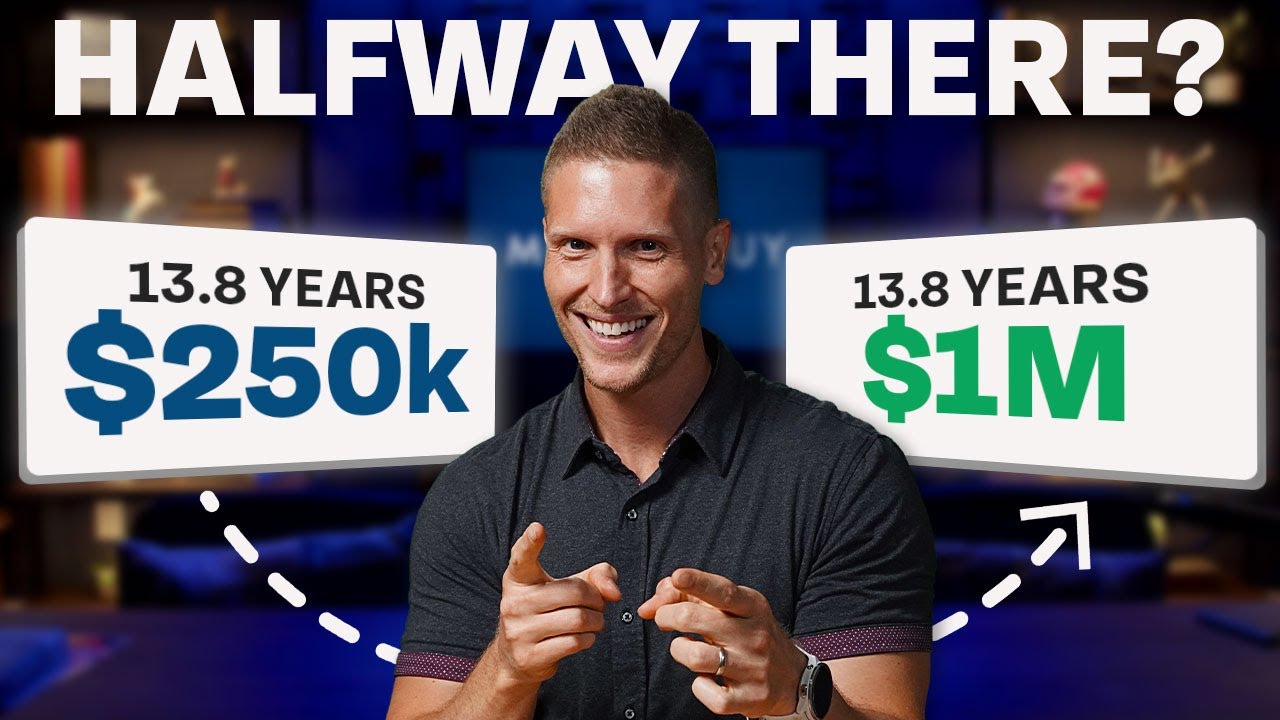Let's now talk about the 30s, okay? In our 30s, life changes a little bit. We still have tons of time, uh, to continue building wealth, tons of opportunity. But man, life gets messy. I am living this right now. It is a messy stage of life because what happens in our 30s is our commitments increase. We start a family, we get married, we start a family, we buy the house, we have job commitments, we have community commitments, we have all this stuff going on. And yet, our disposable income goes lower and lower and lower because all of these things start pulling on. And so in our 30s, it's easy, frankly, for us to just take our eyes off the ball. Yeah, we internally call this the Rebie slide, and it's because it's the messy middle. And I love it because it is so true. In the 20s, you're gonna look at your life and go, "How in the world, what was I spending all my time doing?" Because as soon as the kids start showing up, you're like, "Whoa, my commitments are way up here." But yet, I still my disposable income. Yes, I'm making more money, but it seems like there's a lot more stuff pulling at your purse, pulling at your wallet. It's just, there are so many things. That's why we call it the messy middle. Don't get discouraged. I get it. It's hard, but you still have so many decades. If you can just stay committed, if you can stay disciplined and really focus on still powering and persevering through this stage of your life, you will be greatly, greatly rewarded. And that's what we want to cover with the three buckets and how you should focus on that.
So, in your 30s, there's a chance that your tax-free bucket will be changing a little bit because, again, for most folks, your income increases in your 30s as you continue progressing along in your career. So maybe you cross above the income threshold where you can't directly contribute to a Roth IRA anymore. Now, that's a good thing, generally speaking. Making more money is better than making less money. If you're curious, the income phaseouts for 2023 are between $138,000 and $153,000 for single individuals, $218,000 to $228,000 for married individuals. If you're over those income limits, you may not be able to put money directly into your Roth anymore. But there is a backdoor strategy. There is a way, if you have the correct account structure, that you can continue to build your tax-free bucket. So don't just think because you're making more money, you have to give up on this bucket. Now, yeah, and it's one of those things where a very small group, majority of you still going to use tax-free both on your employer plan as well as with your Roth IRA, whether it's normal contributions or backdoor. But there is a portion of you, go be financial mutants, maybe you go beyond and you have to do tax-deferred, but we'll get into that second.
The big thing I want to focus on is health savings accounts. As we talk about the messy middle, means you might be having children, your family is expanding. We love health savings accounts because of that triple tax advantage. But there's a problem with them, is that you have to, they are required to be attached to a high deductible health plan. That works great if you have no need to go pull off of your health insurance because you realize, the reason the government gives you all these incentives is you have to cover the majority of your medical expenses out of either what you contribute to the health savings account or just out of after-tax dollars.
It might make sense why you have a growing family. Really pay attention on an annual basis to what your plans are because maybe the year that you are having a growing family, you're having a new baby come into the household like you have over the past year, pay attention to should you go more to that Cadillac Insurance where it has low deductibles, doesn't qualify for health savings accounts, but gives you a lot more benefits for your premium dollars. So again, you have to make sure, even though we love the tax-free bucket, it's not tax-free at the cost of everything. So in your 30s, you need to assess this because what's probably going to happen is the tax-deferred bucket is going to get more of your attention. This is likely going to become a much bigger planning tool in your 30s because one of the absolute best legal ways to hide money from the government is through an employer-sponsored retirement plan, and you get to choose: do you want to hide the money now in terms of doing it pre-tax or don't hide the money later in terms of doing Roth? Well, in your 30s, you have to make the determination which one makes the most sense. Do I keep doing the Roth 401k bucket? Am I in the tax bracket that substantiates that? Or do I need to shift my contributions over the pre-tax? Yeah, this is definitely that decade where if you're in your, especially in your late 30s, you start earning, hitting a lick with your income, you will want to start paying attention to if your income's if you add the federal, the state, and you're well above 30 percent on the taxes you're paying, you're going maybe I need the deduction now. Why? Why is that important? The reason I always share this is that realize the goal is that when you retire at some point, you'll have earned income anymore, which is your biggest income generator that's taxed.
Well, if you're now living off of your assets and you have the three-bucket strategy, there's an opportunity, especially with the way they keep pushing required minimum distributions higher and higher, we're age 75 for a lot of you who are watching this now, you will have the opportunity to hopefully manipulate legally the tax code in retirement to take distributions, whether it's Roth conversions or just to take distributions for yourself at a much lower tax bracket, even if tax rates go up. I just have this feeling, and you have to, this is something you have to make an assumption on, nobody knows, nobody has the crystal ball. The government and elected officials are always scared of older people because they vote, so they incentivize a lot of benefits for retirees, whether it's your state taxation is not deductible on Social Security or your pensions or your retirement distributions. Pay attention to all that stuff. That's how we can build up this fact that once you get to a higher income, it might make more sense to take the income benefit now because you think that there's going to be a benefit for taking it at a lower tax rate in the future. So again, focus on that because there's a chance even in your 30s, you might start saving in your taxable account. You might move to step seven. You want to show them the financial. You might move to hyper-accumulation. You might be moving into that in your 30s, but it's not a given.
You want to make sure you continue to stay true to the
Financial Order of operations. Again, it's okay if this bucket isn't growing. If you're someone who's part of the FIRE movement and you want to exit the workforce in your 40s or early 50s, you may need to adjust. However, for the majority of folks who are building, there's a good chance that even in your 30s, the after-tax bucket is not going to get a lot of love. There are still a lot of incentives in the tax code to save in tax-free and tax-deferred accounts. Don't worry, in your 40s, you have a chance to load up in that after-tax account, but make sure it has a time and a place.
Let's check in once again with Manny the mutant. I'd love to see what it looks like now. Manny has been saving and investing for close to 14-15 years. He started investing at the age of 25, saving 25% of his gross income, and he will continue to do that until 65. He started his career at 25, making $50,000 a year, and he gets 5% pay raises each year. He follows the
Financial Order of operations and understands what to do with his next dollar. He also gets an employer match if he puts in 6%. By the time he gets to the end of his 30s, his income has grown to almost $100,000 a year. His final income at age 39 is $98,997, which we'll call $100,000 a year.
Now let's look at his portfolio. He has accumulated almost $530,000, with close to half a million of that being tax-free. He is well on his path to becoming a seven-figure, tax-free millionaire. Manny started at 25, so he's not the typical 20-year-old we often talk about. He waited until age 25 to start, but he is still on track to becoming a tax-free millionaire.
Manny's journey to abundance is impressive. At 29, he had accumulated nearly $91,000. A decade later, at 39, he has $530,000 and is well on his way to being a prodigious accumulator of wealth. If you're not using this tool, go download it at
learn.moneyguy.com and start tracking your net worth. Visualize your journey to abundance. It's pretty amazing to see Manny's progress from age 25, surpassing the average accumulator of wealth, and now heading into his 40s as a prodigious accumulator of wealth.
Remember, we think linear, but investments think in terms of compounding. Make sure you're maximizing compounding growth opportunities. Manny is rocking it, and you can do it too. Bo has already achieved this without inventing something or taking crazy risks. It's about discipline, turning it into margin, and investing in income and assets. Give it time, and you can become Manny the mutant.
I also want to point out that Manny isn't out there trying to find the next latest and greatest investment. We're assuming conservative returns. These are realistic expectations that could reflect your journey as well.













